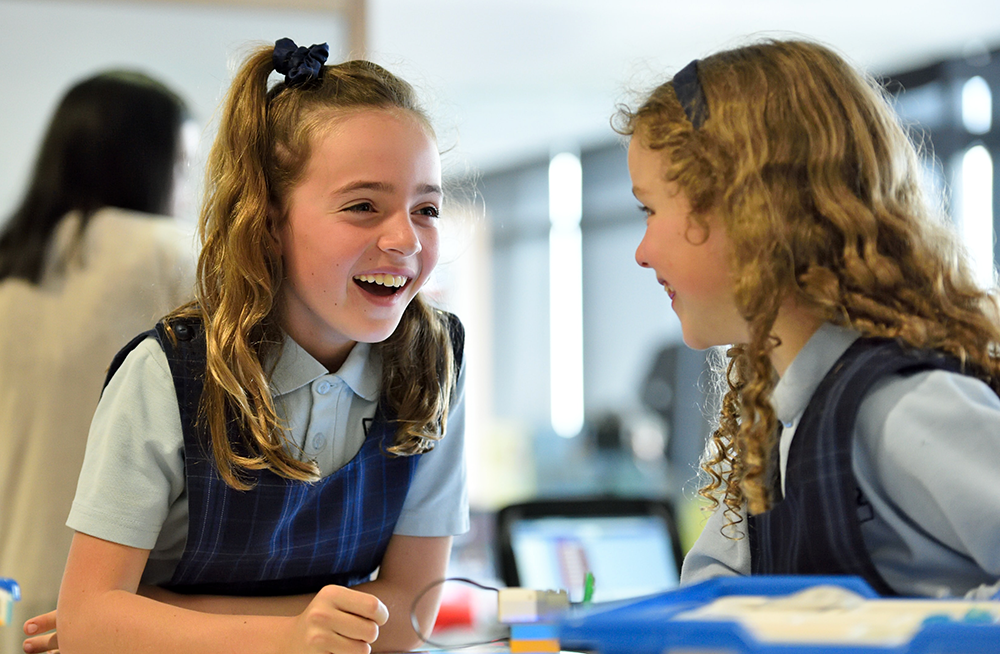Not all children start school at the same time. Parents move their children into new schools for a number of reasons, whilst all other children may have already been there for years. Read on as we answer some of the most frequently asked questions to support you and your child during this transition.

👉🏼 What happens when children change schools?
It’s becoming pretty common to change schools outside of the traditional start of the school year. It’s also normal for children to be anxious, or even resistant to this new change. Students in big secondary schools are also used to peers leaving and being replaced with new starters in September, which can be a source of comfort to students moving to a new school.
Reasons for changing schools may vary:
✈️ Families move home, city or even country, meaning children have to uproot as well.
💥 Students move schools due to being bullied, or as a result of friendship issues.
⚡️ Some schools don’t support children with what they need academically or pastorally, so they might be better supported somewhere else.
👧🏼 Some primary schools transition children out at age 13, not age 11, meaning they join secondary school two years later.
👍🏼 Some students move schools to avoid exclusions, or combat challenging behaviour.
Whatever your reason is, the way that you support your child will be crucial during this time. Change is also normal and positive (think about your own experiences of moving, making new friends or starting a new job), and will prepare your children for the future, so this transition can be seen as an exciting challenge.
👉🏼 How can you support the transition?
Our number one tip is to include your child in the moving process as much as possible. Children are more resistant to change when it is happening to them, and not with them. Feeling a lack of control can cause anger, regression, sadness and worry, and make this time of change traumatic in the long term. Here are some things you can do in the lead up to the move:
🏫 Speak to them frankly about the viable options for them. Often, their current school will be involved with this. Be open with your child and tell them where they are going once everything is confirmed and show them pictures and resources in advance so that they can ask you questions.
🏫 Make a short list of worries (either on paper or out loud) about the change, and talk about ways to combat them. Try to turn worry into excitement by preparing things like the school bag or their new uniform.
🏫 Take them to their new school or area if time and restrictions allow, so that they're able to visualise themselves there ahead of time. Know any students there already? See if they can form connections beforehand.
🏫 Ask the school to ensure that they buddy up your child with an existing, welcoming student in their class. This would ideally be someone friendly with similar interests.
🏫 Allow your child to make decisions. Have they always wanted to cut their hair really short? Go to a specific place with their friends? Pierce their ears? Now might be the time to say yes to one of these requests, giving them back a little bit of control they might have lost in this big life change. This will boost their confidence in making new friends, too.
Teacher tip: 📏 Schools will be empathetic towards new starters, but will try to keep things normal by not drawing attention to them. Teachers prefer to settle students in by involving them in all aspects of school life (like existing students) straightaway!
👉🏼 What should you do once they’ve started?
Remembering that change is a big part of life is important, but this won't always comfort your child when they're missing familiar friends and faces on their first day. Young people especially may feel much more lost than adults who understand that change is sometimes necessary.
Always be honest with your child and remind them that they might need to go out of their comfort zone to communicate who they are and what they need. Teachers will be aware of their learning needs as time progresses, but students should also be brave and speak up when they don’t understand. A common example of this is either repeating, or having missed out on, topics previously studied or taught.
Friendships can’t be replicated or replaced, but new ones can be formed. Having a hobby or a skill helps as chances are there will be students with similar interests who they can share their time with. Don’t be worried if this takes a while, sometimes children need a little time to watch and blend in before opening up to new peers.
Teacher tip: 📏 Keep up communication with your child's previous school if it’s appropriate to your situation. Take examples of their best work with you and leave contact details and a positive lasting impression by donating old uniform and saying thank you. This teaches your child to form lasting connections during times of change.
Book a free tutoring session with GoStudent today and help your child to have another supportive constant as they grow academically.










